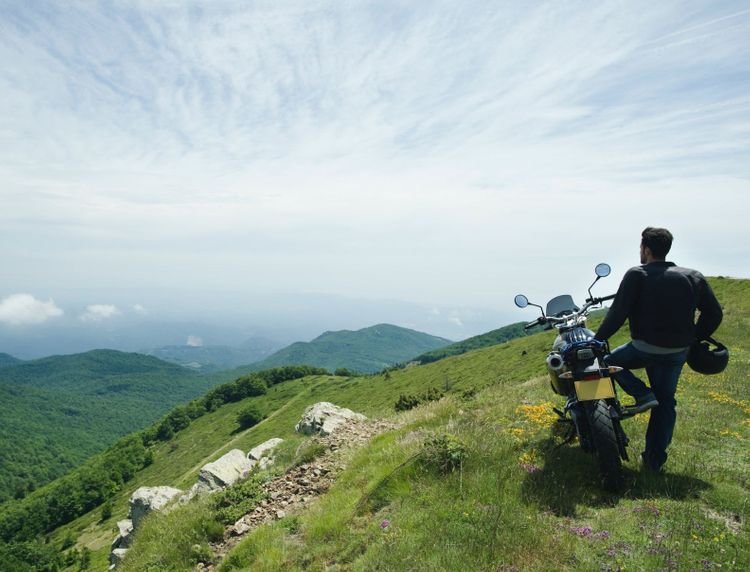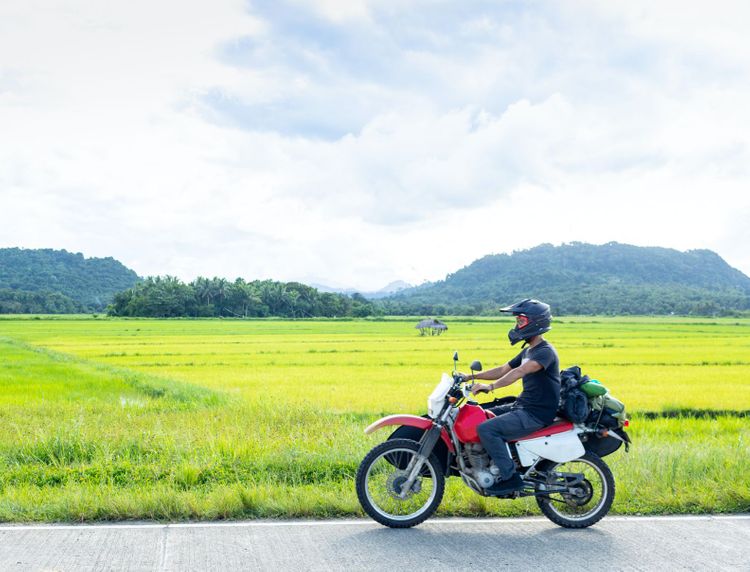Is Your Bike Not Starting After You Left It In The Rain? Here’s What To Do
Monsoons are knocking on our door. In some states, like West Bengal or Bangalore, pre-monsoons have already entered the state. Pre-monsoons sometimes bring erratic and torrential rain. Rains like this can be very harmful to your vehicle. It is worse for two-wheelers which face more exposure to the elements. Sometimes our bikes or scooters may even refuse to take a start. From not taking a start when you need to begin for work to not starting after stopping at a red light, you can be in trouble if your bike is not starting after rain. But do not worry. We will discuss some tips on starting a cold motorcycle engine if your bike is not starting.
Our tips should help you if you have some minor bike starting problems after the rain. Remember, these will not help if there is some major issue with your bike. In that case, your insurance for 2 wheelers will come to the rescue. Having a bike insurance policy means you can call on it for help if you ever find yourself stranded or needing help. Good insurance for 2 wheelers will allow you to get regular servicing for your bike, so you will not have to face the problem of your bike not starting.
Tata AIG’s two-wheeler insurance is particularly helpful in such cases because we provide you with roadside assistance. If you ever find your bike is not starting, just call us, and we will be there to help you. A bike insurance policy with us also gives you access to our network of over 3300 cashless garages. If you compare two-wheeler insurance policies, you will learn why most Indian customers trust us. Not only are our bike insurance policies easy to buy and affordable, but we will also take care of all your bike-related needs.
With that in mind, let us look at what we can do if our bike or scooter is not starting after rain.
Share this article
Switch to the Best Two Wheeler Insurance and Save Big
Comprehensive, Third Party And Own Damage Bike Insurance At Tempting Premium
List of Content
- How to Start Cold Motorcycle Engine After Rain?
- Conclusion
How to Start Cold Motorcycle Engine After Rain?
Bikes are built to withstand a variety of weather conditions. This is especially true for newer bike models. Notwithstanding the numerous measures designed to protect against the elements, bike parts are constantly subject to common wear and tear. Aside from a damp seat, rain, as well as other weather elements, might bring some unanticipated problems. It may lead to your bike not starting. Here are some things you can do to solve your bike starting problem.
Check your carburettors- If you're attempting to start your bike following a downpour, you should first check whether any water has gone into your carburettors. This is far more probable if you use pod filters rather than an air box.
When water enters the carburettors, it disrupts the air-fuel mixture and combines with the fuel. Clearing out the basin at the bottom of the carburettor and clearing your air filter are the greatest ways to tackle this. That should clear the pipeline of the majority of the harmful water.Unplug the spark plug- If you suspect water has gone into your bike, disconnect the spark plugs. It could be the reason why your bike is not starting after rain. Water can potentially harm the threads of spark plugs. Furthermore, if they are kept on for an extended period, soil from rains can accumulate on them, rendering them hard to clean.
Remove the battery- If your bike or scooter is not starting after rain, remove the battery as soon as possible. This will not damage the bike's electric network. In fact, several such high-tech bikes exist now, wherein the electric supply is maintained by the battery long after the engine has been shut off. Remove the battery in this scenario to avoid electric damage. Your bike should start once you reattach your batteries.
Check the ignition system- If your bike is not starting after a rain, another potential cause is that your ignition system is wet. The inductor and the switches are two sites that can cause problems. Oxidation will lead the coil windings to fail if water has crept into the coils or alternator. This will result in a no-spark situation, making it extremely difficult to start the bike. If you see that your ignition system is the problem or if there is a short, you should get help immediately.
Try to dry it- If you are wondering how to start a cold motorcycle engine after it has gotten wet in the rain, the best thing to do is dry it. You can do this by covering it in paper towels or newspapers or even using a dryer. Covering it in paper pulls any water that has gone in, and the water is soaked into the paper. You can also use cloth towels if you do not have paper towels handy. Next, try soaking as much water off your bike and squeeze it out. Hot air will work best if the rain has led to water accumulation and your bike was submerged in water. Finally, use a dryer to pull out water accumulated in unwanted places you cannot physically reach.
Go to a mechanic- If you have tried everything and your bike is still not starting, the best thing to do is take it to a mechanic. A mechanic will be able to diagnose the true problem with your bike and be able to fix it. For example, it may be an issue with the wiring or the engine. These are not things you can deal with on your own. In such cases, you may also be required to leave your bike with the mechanic for some time.
Conclusion
Therefore, if you are in a situation where your bike is not starting after rain, you can try the pointers mentioned above. You can also prevent your bike from getting as wet in the rain as possible by parking it in a garage or using a bike cover when out in the open. However, there may be situations where your bike is damaged due to floods or torrential rain. In such cases, it is best to rely on insurance for 2 wheelers which will provide you with financial aid to repair your bike.
Switch to the Best Two Wheeler Insurance and Save Big
Comprehensive, Third Party And Own Damage Bike Insurance At Tempting Premium
People also search for
Key Insurance term
Share this article
Latest from our blogs

5 Tips To Keep Your Two Wheeler Looking New
Make sure to wash it often. This keeps dirt and other unwant...
Read More
What Does It Take to Be a Good Biker?
You must have wondered what it takes to become a better ride...
Read More
5 Things You Did Not Know About Two Wheeler Insurance
In a time of heavy traffic and accidents, two wheeler insura...
Read More